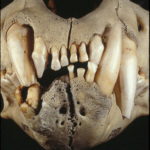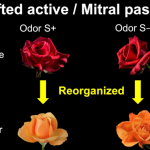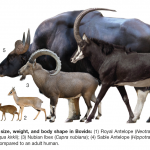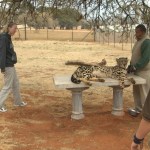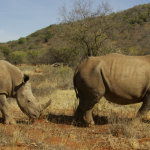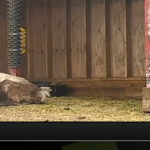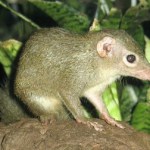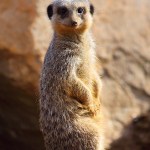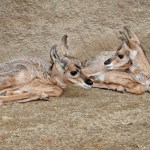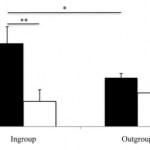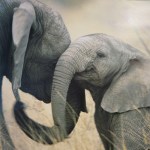mammals
It wasn't a mammoth, it was a mastodon. But it was still a big hairy elephant featured at the climax-end of the main exhibit hall in the New York State museum. And it was an exhibit to end all exhibits. The New York State Museum, during its heyday, was world class, and the hall of evolution, which seemed old enough to have involved Darwin himself as a consultant, featured the reconstructed skeleton as well as a fur-covered version, of the creature discovered in a kettle only a few miles away. That exhibit, along with a dozen other spectacular exhibits that to my knowledge have not been…
I'll never forget my first lion.
A colleague and I had just arrived in the Semliki Valley, in the Congo, to a part of that valley then known as the most predator-rich region of Africa, with loads of lions and heaps of hyenas. Lots of leopards too. We arrived at the main base camp for a large expedition that I was to join a year later (this was a brief visit) and were told to find the satellite camp, out in the bush.
"Ten clicks that way, then a left on their road. Good luck finding the road."
Good luck indeed. Took us forever. And, at one point, after night fell, we had the brilliant idea…
How doe a mammal know what a smell is, and more importantly, how does a mammal learn new smells?
Recent research suggests that different kinds of neurons reorganize in novel ways in response to olfactory signals to produce an olfactory memory.
Below is a video made by the research team that explains this. If that video does not render correctly for you, click here to see it on the original page.
From the press release:
The human brain has the ability to recognise and process a very wide range of sensory stimuli, from which it builds a mental representation. But do these representations…
According to the Encyclopedia Britannica, there are 143 species of bovids. The Animal Diversity Web is a bit less precise, indicating that there are "more than 140 extant and 300 extinct species." That second number is highly questionable because today there exist sister species that are so similar I doubt they could be told apart from fossils alone. If you check around the internet, this ~140 number comes up again and again, and Wikipedia says 143.
Research published in 2011 and later by Colin Groves, Peter Grubb, and David Leslie, which has been tagged as controversial by some but…
We hear this all the time. Pig physiology is like people physiology. Pigs and humans have the same immune system, same digestive system, get the same diseases. Pigs are smart like people are smart. Pigs are smarter than dogs. And so on. Ask a faunal expert in archaeology or a human paleoanatomist: Pig teeth are notoriously like human teeth, when fragmented. Chances are most of these alleged similarities are overstated, or are simply because we are all mammals. Some are because we happen to have similar diets (see below). None of these similarities occur because of a shared common…
Since it is Caturday, and I don' think I've posted these before.
A King Cheetah (a rather large form of cat) in South Africa:
King Cheetah (cat)
Closer in on the King Cheetah, South Africa
Picture Of Cat On Top Photo Credit: Gatto Mimmo via Compfight cc
It has long been known by humans that female mammals can be attracted with the call of a young in distress. There is a famous documentary film of the Hadza, a foraging group in Tanzania, in which this method is used by young boys to trap Dasssies (rock Hyrax). First you catch a baby Dassie (not hard) then you hid and bit it in the neck so it cries out, then when the momma Dassies come to rescue it you shoot them at short range with an arrow or whack them with a stick. Adult Efe Pygmy hunters sometimes imitate the call of a young Duiker (a forest antelope) in distress in order to draw in…
UPDATE (March 27 2015): US gives Texan rhino hunter an import permit
A Texan who won an auction to shoot an endangered black rhino in Namibia has been given a US permit to import the trophy if he kills one.
The US Fish and Wildlife Service said hunting an old rhino bull helps to increase the population.
There was an outcry when Corey Knowlton won the auction last year, with animal rights activists decrying it. It's not yet clear when the hunt will happen.
Namibia is home to some 1,500 black rhino, a third of the world's total.
The US agency issuing the permit said that importing the carcass…
Every now and then, more often than you might expect, I mention something in lecture (usually in a classroom in front of students) and a small number of individuals express incredulity that the thing exists. Pygmies are one of those terms that garners disbelief. Many people assume they are made up. At the same time, a disconcerting number of times the opposite happens. Mermaids, aliens, dragons, Atlantis, etc. are not real but many students, educated by the History and Discovery channels, apparently, (I don't watch them but I hear things), think they are.
Strangely, one of the things…
Minnesota has two populations of moose, one in the northwestern part of the state, one in the northeastern part of the state. Both are in decline. The decline seems to be mainly due to disease, which in turn, seems to be exacerbated by the occurrence of shorter, warmer winters and longer summers.
Today, the Minnesota DNR is announcing an indefinite halt to the annual moose hunt, because the latest surveys show that the population is in very serious decline. From a brief preliminary report in the Star Tribune:
Based on the aerial survey conducted in January, the new population estimate is…
Nature is a potential source of guidance for our behavior, morals, ethics, and other more mundane decisions such as how to build an airplane and what to eat for breakfast. When it comes to airplanes, you'd better be a servant to the rules of nature or the airplane will go splat. When it comes to breakfast, it has been shown that knowing about our evolutionary history can at times be a more efficacious guide to good nutrition than the research employed by the FDA, but you can live without this approach. Nature works when it comes to behavior too, but there are consequences. You probably…
It has been said that our most distant primate ancestors, the mammal that gave rise to early primates but itself wasn't quite a primate, was most like the Asian tree shrew, which is neither a shrew nor does it live in trees. This is, of course, untrue. When the average American sees a shrew native to the new world scurrying past, he or she usually thinks of it as a form of mouse. Which it isn't. (In fact, there are no "mice" native to the new world, but even if we give our hypothetical observer the concept of "rodent" as in "eeek, a rodent" the shrew is not that either.) If you spend any…
Skull of Hadrocodium wui. (Image courtesy of Mark Klinger and Zhe-Xi Luo, Carnegie Museum of Natural History)
THE question of how mammals evolved their exceptionally large brains has intrigued researchers for years, and although many ideas have been put forward, none has provided a clear answer. Now a team of palaeontologists suggests that the mammalian brain evolved in three distinct stages, the first of which was driven by an improvement in the sense of smell. Their evidence, published in tomorrow's issue of Science, comes from two fossilized skulls, each measuring little more than 1cm in…
Human infants have one important job during the first years of life, and that is to learn about the world and their culture from their parents and other caregivers. But what is learning? I've previously written that Hungarian developmental psychologists Gergely and Csibra have defined learning as the acquisition of new, generalizable knowledge that can later be used within a new context. Further, they have posited that evolution has prepared humans to learn generalizable knowledge from their caregivers. They proposed an elegant hypothesis: that a specialized innate pedagogy mechanism - called…
What is learning?
Most psychologists (indeed, most people in general) would agree that learning is the acquisition of new knowledge, or new behaviors, or new skills. Hungarian psychologists Gergely and Csibra offer a deceptively simple description: "Learning involves acquiring new information and using it later when necessary." What this means is that learning requires the generalization of information to new situations - new people, objects, locations, or events. The problem is that any particular piece of information that a human or animal receives is situated within a particular context…
I've been a bit remiss in posting much this week, mostly because I had to prep a guest lecture (from which I just returned, and it was awesome thankyouverymuch) on the Domestication of Social Cognition.
In the meantime, now that spring is here, baby animals are starting to pop up all over the LA Zoo. I haven't managed to make it to the zoo yet to see them, but in the meantime, enjoy these pictures (click each one to enlarge) provided by the zoo itself.
This baby koala (not a bear! koalas are marsupials, like kangaroos) was actually born on July 6, but because koalas, like kangaroos, spend the…
This newest addition to the Cincinnati Zoo, a female giraffe, was born last Saturday, April 2, 2011.
She's the first giraffe born at at the Cincinnati Zoo in 26 years. Head on over to their facebook page and suggest a name!
Oh, and did you know that giraffes can (sort of) swim? Check out Darren Naish's post on the topic - it was, incidentally, one of the 50 posts selected for this year's Open Lab.
You know that old phrase, "monkey see, monkey do"? Well, there might be something to it, except that chimpanzees aren't monkeys. (Sadly, "ape see, ape do" just doesn't have the same ring to it.) A new paper published today in PLoS ONE has found evidence that chimpanzees have contagious yawning - that is, they can "catch" yawns from watching other chimpanzees yawning - but (and here's the interesting part) only when the chimp that they're watching is a friend.
At first, scientists thought that contagious yawning was the result of a releasing mechanism - in other words, seeing someone yawn…
Given the recent elephant hunting scandal, I thought I'd repost this award-winning piece from the archives, on a very clever way to deter elephants from raiding human settlements. Much cleverer than shooting them. (Click on the archives icon for the original.)
What information is contained in the call of a mammal? Some calls might reflect the internal emotional state of the animal, like fear or anxiety, or they can refer to an external object, agent, or event, like the presence of a predator. Rhesus monkeys, lemurs, baboons, and guinea pigs, for example, will produce calls when separated from…
I was reading Christie's excellent post (and you should too) on GoDaddy CEO Bob Parsons' elephant killing incident (is it too early to be calling this #ElephantGate?)
Although I don't know quite enough about what is going on in Zimbabwe, I tend to err on the side of not intentionally killing elephants because - as I argued for the case of chimpanzees - they are very likely self-aware.
I wrote:
There is another important cognitive capacity that unites animals with high encephalization quotients (the ratio of brain to body size - I recommend going back to read my earlier post for the context…

